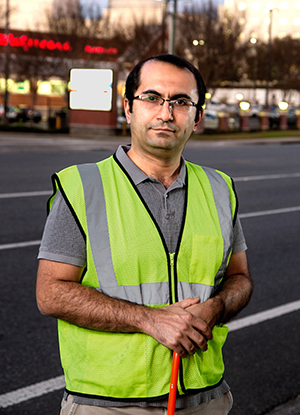
By Susan Vineyard for AdobeStock
A new study focuses on improving the accuracy of prediction models related to crash statistics, aiming to make roads safer and better allocate infrastructure resources in the Sunshine State.
“Transportation engineers at the federal and state level are interested in historical roadway crash data to identify hotspot locations and improve safety,” said Arda Vanli, associate professor in the FAMU-FSU College of Engineering’s Department of Industrial and Manufacturing Engineering. “But there is a problem with the accuracy of the models.”
The Florida Department of Transportation (FDOT) uses Safety Performance Functions (SPFs), which are modeling equations to predict the number of crashes based on property damage, injuries and fatalities. SPFs allow practitioners to incorporate roadway and intersection characteristics when statistically analyzing historical data and making predictions.

Vanli explains, “Sometimes the data underestimates or overestimates the number of crashes in certain locations, which can lead to biased interpretations.”
To solve this problem, the researchers developed specific thresholds for SPF models to reflect traffic volume and segment length. By narrowing the focus, the models are more accurate. They developed a software package for FDOT and provided the data needed to compensate for inaccuracies.
Mohammadreza Koloushani, a Ph.D. candidate at the college and a lead author on a paper published in the Transportation Research Record, describes their findings.
“It’s interesting that rural roadways with less traffic are more difficult to predict in terms of crashes and are challenging in terms of prediction,” Koloushani said. “But our transportation partners need to know the high-risk locations to invest in the future safety countermeasures and for pedestrians and bicyclists to be safe on the road.”

Who’s involved:
Vanli is working with Associate Professor Eren Erman Ozguven and Professor Ren Moses in the college’s civil and environmental engineering department, graduate students and researchers from the FDOT. The multidisciplinary project showcases the collaboration between industrial and civil engineering entities.
“Dr. Vanli is an expert in optimization and statistical techniques, and Dr. Ozguven and I specialize in highway safety and transportation engineering, which provides a unique synergy to the project,” Moses said.
Why it matters:
As a result of the proposed thresholds, FDOT practitioners should be able to identify road segments with high crash rates more accurately and make better decisions regarding an effective safety countermeasure. In addition, enhanced prediction accuracy can help better allocate road maintenance and improvement resources.
“These improvements will ultimately save lives,” Ozguven said. “We also hope it will help the FDOT have the information they need to make informed decisions.”
Where’s the money coming from:
The Florida Department of Transportation funded the $430,000 study through Florida State University in two phases. The team is in the second phase of this project and is expected to be completed in May 2024.
RELATED ARTICLES
Improving Public Health Disease Surveillance and Response with Better Statistical Tools
Engineering researchers harness wind data to help meet energy needs in Florida

